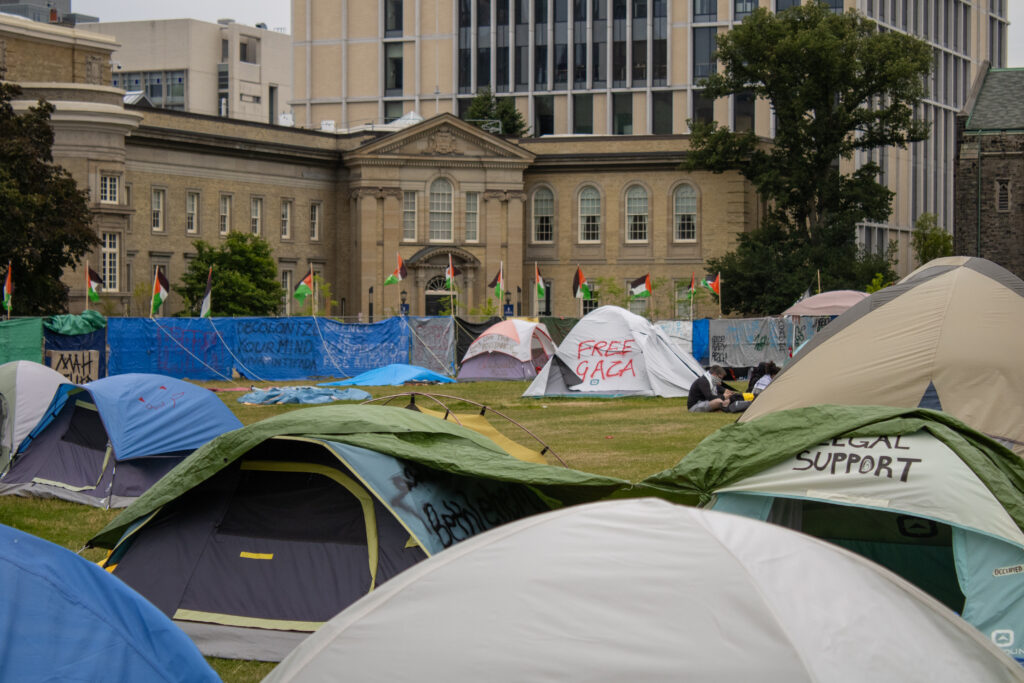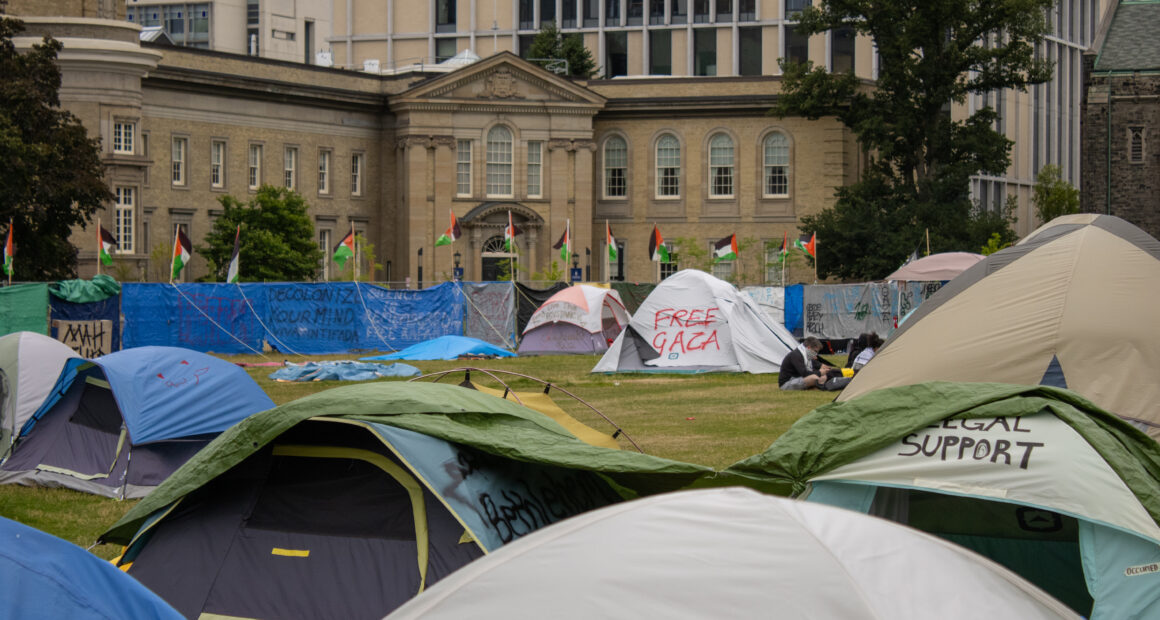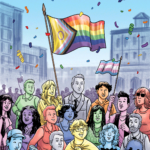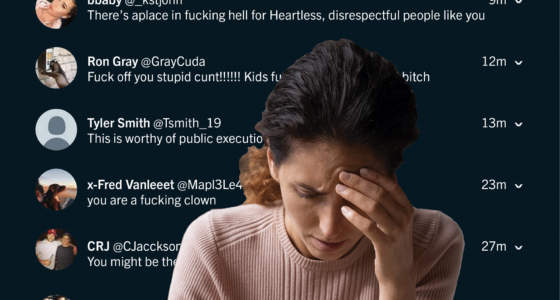How The Varsity reported on the historical activism of “The People’s Circle for Palestine”

On May 2, the University of Toronto (U of T) student group Occupy for Palestine (O4P) began an encampment at King’s College Circle in response to Israel’s ongoing war on Gaza. It demanded the university disclose its investments, cease investing in companies providing weapons to the Israeli military, and sever ties with Israeli universities.
Israel’s war on Gaza at that point had reached its eight-month mark. Reporters from The Varsity, U of T’s student-run newspaper, were at the scene as rumours circulated there would be some form of police or security intervention at midnight. “Our initial plan was to sit there for the whole day and see what was going on until the action took place,” says Eleanor Yuneun Park, the Varsity editor-in-chief. Instead, the protest continued for two months without disruption.
As a student-run paper, the Varsity did not have the capacity to provide ongoing daily coverage. However, it was in a far better position than most Canadian news outlets to cover O4P’s protest because it was equipped with an acute understanding of its campus culture, governance, and dynamics.
The newspaper’s editorial board previously expressed its stance on pro-Palestinian free speech in an article published in March, making way for its current support of O4P’s right to protest and shed light on the administration’s lacklustre response.
As the days passed, Canadian journalism outlets depicted the growing tension between the students and the university as a microcosm of geopolitical tension within the country. “We realized all the major newspapers were covering [the encampment] without any student perspective,” Yuneun Park says. Such coverage lacked context on student activism and the complex dynamics of campus culture. The Varsity was in the perfect position to bridge this gap.
Prioritizing Sustainability
The Varsity, having been around since 1880, has earned the trust of the community it serves, which helped in its communications with protesters. “Being established as a student newspaper allowed us to get a little bit more insight into what was happening in real time,” says the Varsity news editor Selia Sanchez. By keeping channels open, the team received texts in advance of major announcements and news conferences.
Working at a student paper gave them an insider perspective, but their staff did not have the resources to keep up with mainstream news coverage. Lacking personnel, Sanchez says, “We quickly realized that we couldn’t sustainably do daily coverage.” Although the masthead took shifts to help, only three to five students wrote the articles. Initially, they covered reporting and updates in three- or four-hour shifts, but this quickly became unmanageable due to the prolonged nature of the encampment. “We needed to make a transition into long-term coverage,” says Sanchez, “reporting on the main issues and not necessarily the day to day.”

The Varsity managed to do so by delivering in-depth analyses of the university’s statements and policies, and comparing them to past practices such as the administration’s decision to divest from South African apartheid in 1988, and university policies outlining how the university’s core academic values include “freedom of inquiry and open debate.”
Scrutiny and Personal Attacks
For its coverage, the Varsity team faced public scrutiny and personal attacks, including accusations of being biased and being responsible for violent events. “I was receiving around 200 emails a day,” says Yuneun Park. “I had professors emailing me saying that I would never get a job.”
The Varsity also had difficulty accessing university media communications. Although U of T’s media relations director, Philippe Devos, maintained his department “tries to treat the Varsity like any other journalistic outlet,” Yuneun Park voiced frustration regarding their access compared to established media outlets. On one occasion, two Varsity reporters were denied entry to a university press conference, but Devos maintains the event was for broadcast outlets only.
On July 3, at 5 p.m., O4P cleared the camp in accordance with a court-ordered deadline issued by the Ontario Supreme Court. Reflecting on the experience, Yuneun Park recognizes her team’s challenges and how they affected their coverage. “It was a learning curve for all of us.” To help their approach toward campus coverage of Palestinian student activism going forward, the team is now creating a database containing relevant information, sources, and best practices.
Despite the challenges from the administration and the public, the Varsity’s coverage of the encampment at King’s College Circle is a historical record of campus activism. For two months, the student-run paper team provided in-depth, nuanced reporting that championed student voices.
About the author
Matthew is in his final year of the Master of Journalism program. He has written stories for The National Post, Spacing, CanCulture, and more. He is interested in writing stories about social justice, art, and culture.








